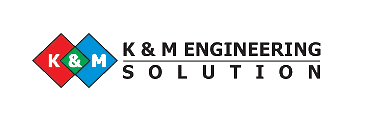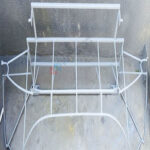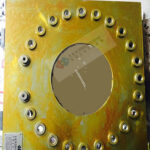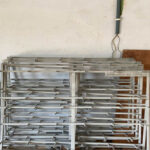K&M Engineering Solution worked closely with manufacturers across automotive, aerospace, appliance, and industrial sectors — and one thing is clear: when it comes to lean manufacturing, small improvements in fixture and jig design often deliver the biggest gains on the shop floor.
As a team deeply involved in the design and manufacturing of jigs — from manual drilling jigs to robotic painting jigs — we’ve seen firsthand how the right jig can eliminate unnecessary steps, reduce operator dependency, and improve repeatability. This isn’t theory — it’s the daily reality we help our clients achieve.
Many companies start lean initiatives with 5S, takt time mapping, or layout redesigns. All of that is important. But one overlooked area where lean principles truly come alive is in custom jig design. General-purpose jigs can only go so far — they introduce adjustments, errors, and operator judgment. That’s where purpose-built jigs make a measurable difference.
For example, we recently worked with a Tier-1 automotive supplier that was experiencing long changeover times on their manual painting line. The team was using a standard clamping jig for three different part variants, which led to frequent misalignment and excessive rework. After analyzing their process, we designed a variant-specific painting jig with quick-lock features, which reduced their changeover time by 70% and eliminated positioning-related rework.
Here’s why purpose-built jigs deliver lean results:
-
They reduce setup time dramatically. Every second matters in mass production. Our drilling jigs, for instance, are designed with minimal adjustment requirements so operators can start machining without trial-and-error positioning.
-
They minimize operator dependency. Not every shift can rely on the most experienced hands. When the jig takes care of positioning, orientation, and clamping, anyone on the line can achieve precision — consistently.
-
They improve quality at the source. In line with lean’s “build quality in” principle, we often integrate inspection features like part sensors or mistake-proofing guides (poka-yoke) directly into the jig. This reduces rework and scrap significantly.
-
They enhance flow — manual or robotic. Whether you’re painting manually or with a robot, the speed and accuracy of part positioning affect the entire cell’s efficiency. Our robotic line jigs are designed with precise datum surfaces, ensuring exact repeatability for every part, every cycle.
In our experience, most companies realize the value of custom jigs only after facing delays, quality issues, or labor bottlenecks. We believe it shouldn’t take a crisis to improve process control.
We don’t just fabricate jigs — we engineer solutions based on your process, part geometry, and production volume. Our team works closely with your production, quality, and design departments to ensure the jig is not only functional but actually improves how your operators work.
Here’s a simple comparison based on real observations from our clients:
| Aspect | Standard Jig | Purpose-Built Jig from K&M Engineering Solution |
|---|---|---|
| Setup Time | Manual adjustments needed | Plug-and-play positioning |
| Operator Skill Dependency | High | Low |
| Repeatability | Inconsistent | Consistent across all cycles |
| Downtime from Errors | Frequent | Drastically reduced |
| Suitability for Automation | Limited | Designed to integrate with robots and sensors |
We also keep in mind the long-term maintenance, jig storage systems, and part life cycles. Whether you’re handling five variants or fifty, we design for scale and sustainability.
If your team is aiming to reduce takt time, improve first-pass yield, or scale output without adding manpower, a generic jig might be holding you back more than you realize.
From our floor to yours — if your production line demands precision, speed, and consistency, let’s talk about how a purpose-built jig can make that possible.
- Contact our design team today to discuss a jig solution tailored to your product and process.




